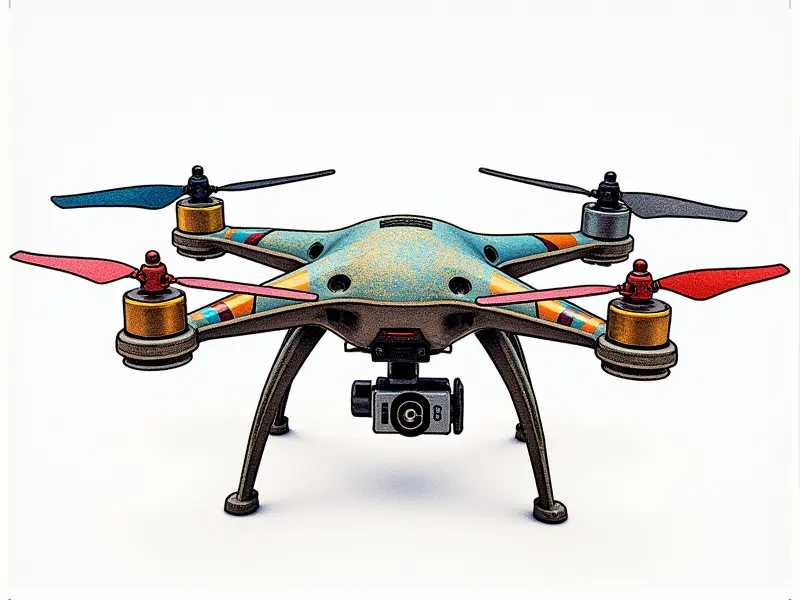What's the best FPV setup?

First-person view (FPV) drone racing has exploded in popularity over recent years, offering adrenaline-pumping excitement and a unique perspective on aerial photography. However, choosing the right setup can be overwhelming with so many options available. This guide will help you navigate through various configurations to find the best FPV setup for your needs.
Top FPV Setup Under $500
For enthusiasts looking to dive into FPV racing without breaking the bank, a budget-friendly setup is essential. Here are some components that make up an excellent FPV system under $500:
- Frame: A lightweight and durable frame like the Runcam Swift 2 or DJI F450.
- Flight Controller: The Betaflight-compatible Naze32 or Pixhawk.
- Battery: High-capacity LiPo batteries such as 1300mAh 3S or 1800mAh 4S.
- Motor and Propeller: Reliable motors like the Emax MT2206 paired with 5045 props.
- ESC (Electronic Speed Controller): DYS XM2108 or similar high-performance ESCs.
- Camera: A reliable camera such as the Runcam Swift 2 or TBS Unify Pro Black.
- Goggles: Budget-friendly goggles like the Fatshark Dominator HD+ or Vortex.
Best Beginner FPV Setup Explained
For beginners, simplicity and ease of use are paramount. A beginner's setup should focus on reliability and affordability while providing a solid foundation for learning:
- Frame: The QAV250 or Runcam Swift 2.
- Flight Controller: Betaflight-compatible Naze32 or Pixhawk.
- Battery: High-capacity LiPo batteries like 1800mAh 4S.
- Motor and Propeller: Reliable motors such as Emax MT2206 with 5045 props.
- ESC (Electronic Speed Controller): DYS XM2108 or similar high-performance ESCs.
- Camera: Runcam Swift 2 or TBS Unify Pro Black.
- Goggles: Fatshark Dominator HD+ or Vortex.
Affordable FPV Gear for Racing
Racing enthusiasts often seek high-performance gear that won't break the bank. Here are some components to consider:
- Frame: QAV250 or Runcam Swift 2.
- Flight Controller: Betaflight-compatible Naze32 or Pixhawk.
- Battery: High-capacity LiPo batteries like 1800mAh 4S.
- Motor and Propeller: Emax MT2206 with 5045 props.
- ESC (Electronic Speed Controller): DYS XM2108 or similar high-performance ESCs.
- Camera: Runcam Swift 2 or TBS Unify Pro Black.
- Goggles: Fatshark Dominator HD+ or Vortex.
Quick Build: Entry-Level FPV Drone
Building an entry-level FPV drone is a great way to get started. Here’s a step-by-step guide:
- Select Components: Choose the frame, flight controller, battery, motors, ESCs, camera, and goggles.
- Assemble Frame: Attach arms and motor mounts to the frame.
- Install Motors and Props: Secure motors and attach propellers.
- Connect ESCs: Wire ESCs to flight controller and battery.
- Mount Flight Controller: Install flight controller on the frame.
- Install Camera: Mount camera to the front of the drone.
- Connect Antenna: Attach antenna to the camera for signal transmission.
Must-Have Components for FPV Beginners
To ensure a smooth start, here are essential components every beginner should have:
- Frame: QAV250 or Runcam Swift 2.
- Flight Controller: Betaflight-compatible Naze32 or Pixhawk.
- Battery: High-capacity LiPo batteries like 1800mAh 4S.
- Motor and Propeller: Emax MT2206 with 5045 props.
- ESC (Electronic Speed Controller): DYS XM2108 or similar high-performance ESCs.
- Camera: Runcam Swift 2 or TBS Unify Pro Black.
- Goggles: Fatshark Dominator HD+ or Vortex.
DIY FPV Setup Under $300 Guide
Building your own FPV setup can be cost-effective and rewarding. Here’s how to do it under a budget of $300:
- Select Components: Choose the frame, flight controller, battery, motors, ESCs, camera, and goggles.
- Assemble Frame: Attach arms and motor mounts to the frame.
- Install Motors and Props: Secure motors and attach propellers.
- Connect ESCs: Wire ESCs to flight controller and battery.
- Mount Flight Controller: Install flight controller on the frame.
- Install Camera: Mount camera to the front of the drone.
- Connect Antenna: Attach antenna to the camera for signal transmission.
Essential Gear for First-Time FPV Flyers
For first-time flyers, having the right gear is crucial. Here’s what you need:
- Frame: QAV250 or Runcam Swift 2.
- Flight Controller: Betaflight-compatible Naze32 or Pixhawk.
- Battery: High-capacity LiPo batteries like 1800mAh 4S.
- Motor and Propeller: Emax MT2206 with 5045 props.
- ESC (Electronic Speed Controller): DYS XM2108 or similar high-performance ESCs.
- Camera: Runcam Swift 2 or TBS Unify Pro Black.
- Goggles: Fatshark Dominator HD+ or Vortex.
DIY FPV Setup Under $300 Guide (Continued)
To build a DIY FPV setup under $300, follow these steps:
- Select Components: Choose the frame, flight controller, battery, motors, ESCs, camera, and goggles.
- Assemble Frame: Attach arms and motor mounts to the frame.
- Install Motors and Props: Secure motors and attach propellers.
- Connect ESCs: Wire ESCs to flight controller and battery.
- Mount Flight Controller: Install flight controller on the frame.
- Install Camera: Mount camera to the front of the drone.
- Connect Antenna: Attach antenna to the camera for signal transmission.
DIY FPV Setup Under $300 Guide (Final)
To complete your DIY FPV setup under $300, follow these final steps:
- Select Components: Choose the frame, flight controller, battery, motors, ESCs, camera, and goggles.
- Assemble Frame: Attach arms and motor mounts to the frame.
- Install Motors and Props: Secure motors and attach propellers.
- Connect ESCs: Wire ESCs to flight controller and battery.
- Mount Flight Controller: Install flight controller on the frame.
- Install Camera: Mount camera to the front of the drone.
- Connect Antenna: Attach antenna to the camera for signal transmission.
Conclusion
Building an FPV setup can be a rewarding experience. By following these guides, you can create a high-performance system that fits your budget and needs. Whether you're a beginner or an experienced flyer, having the right components is essential for optimal performance.

